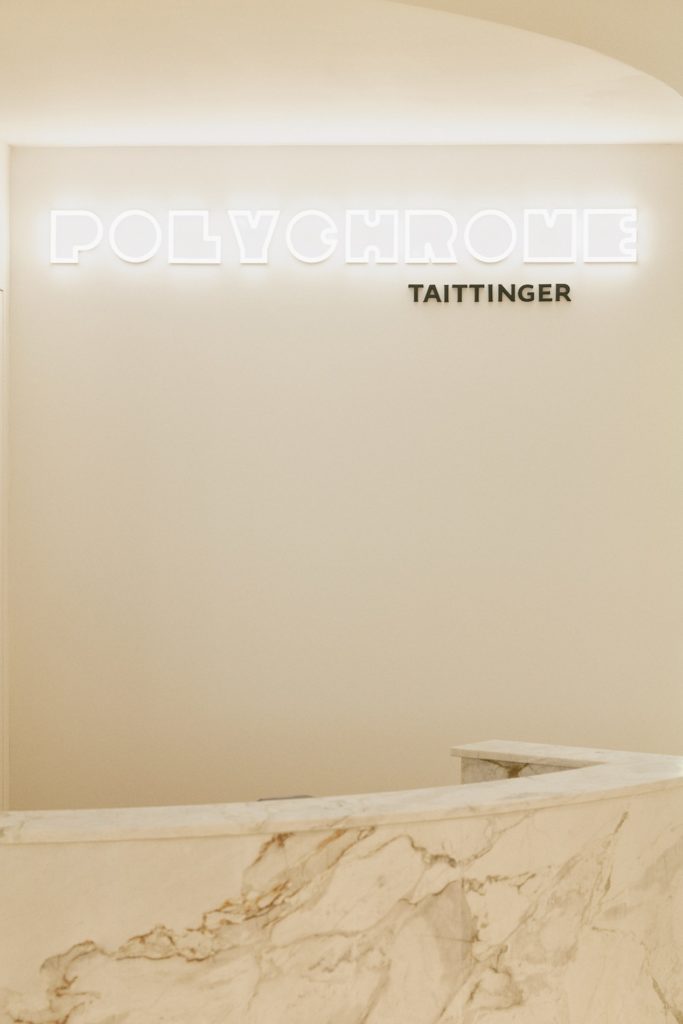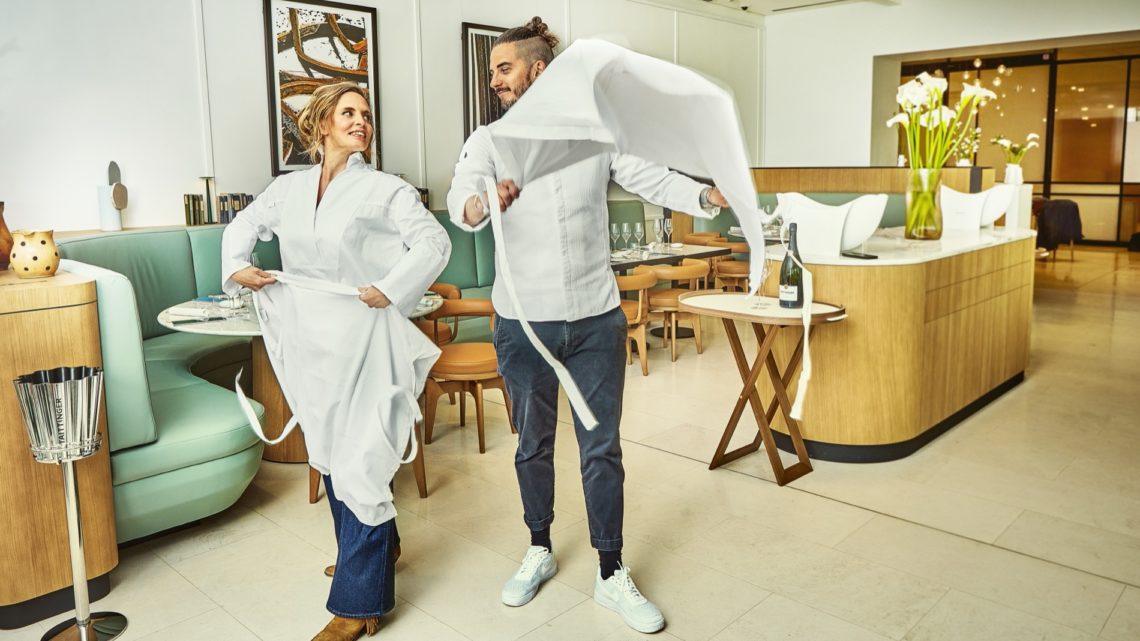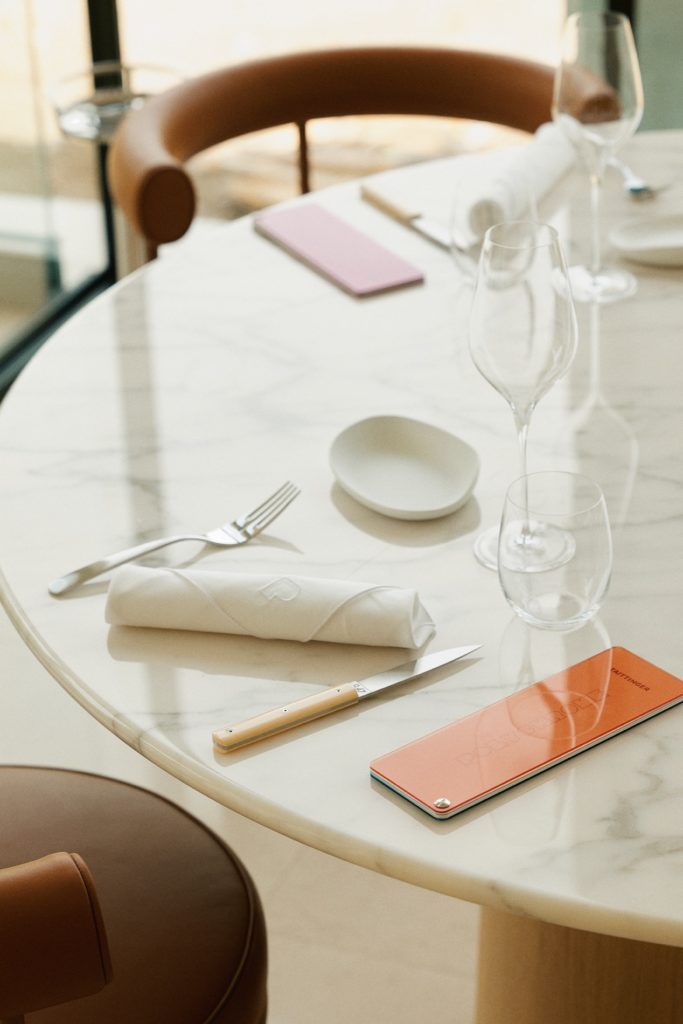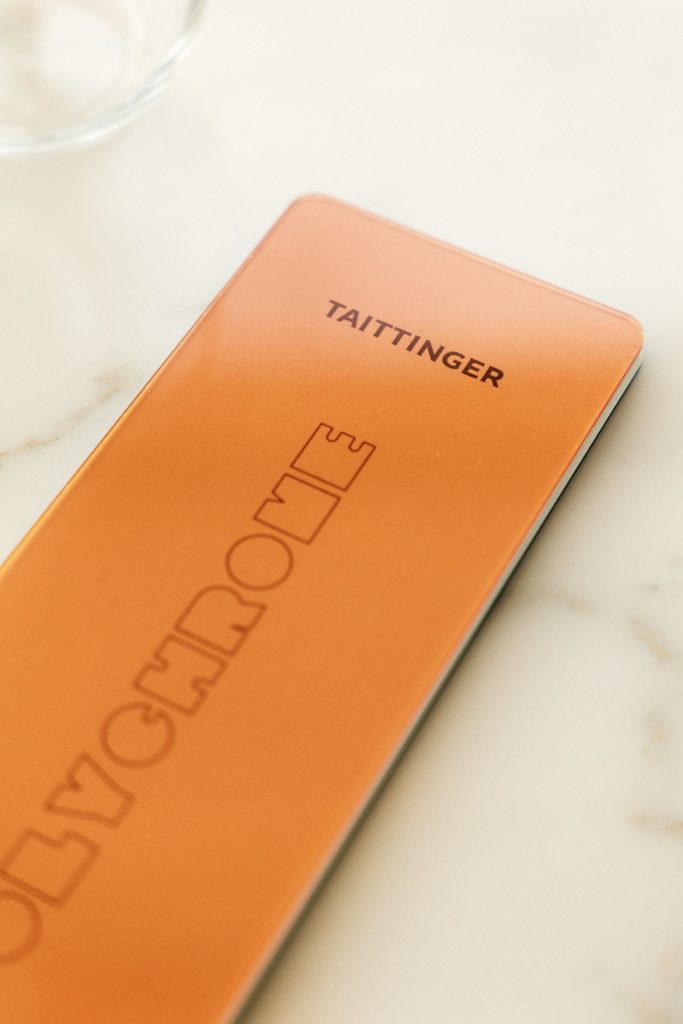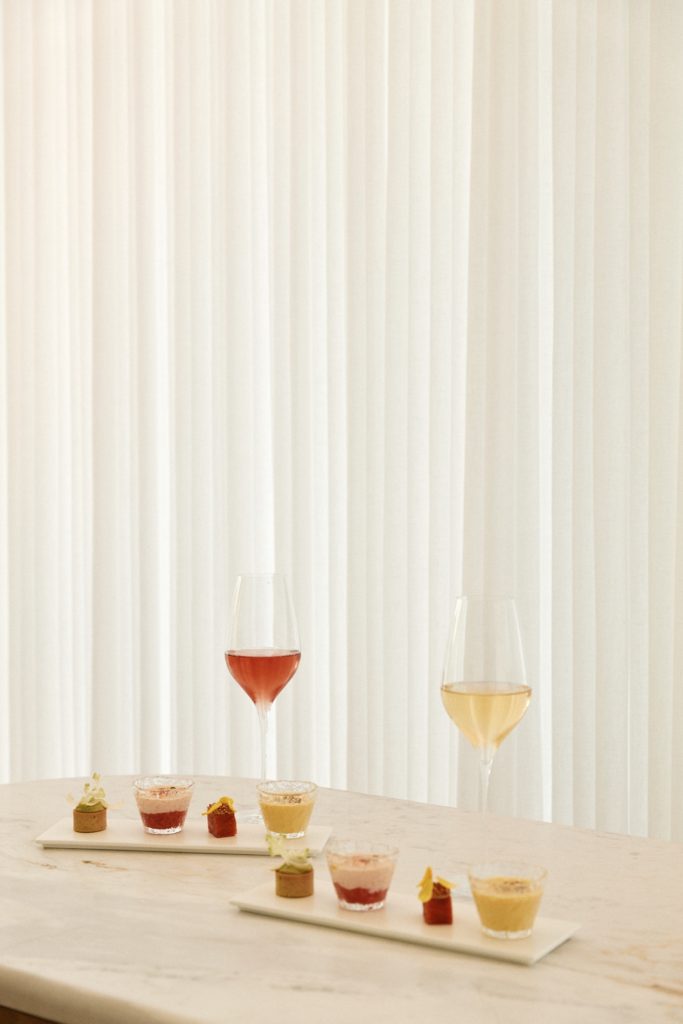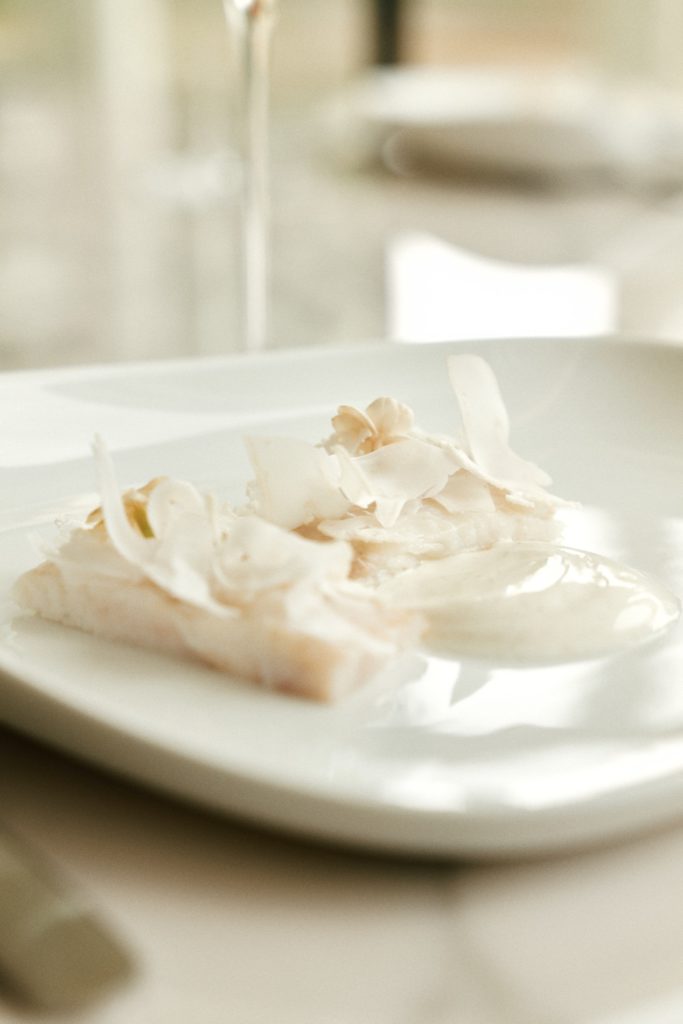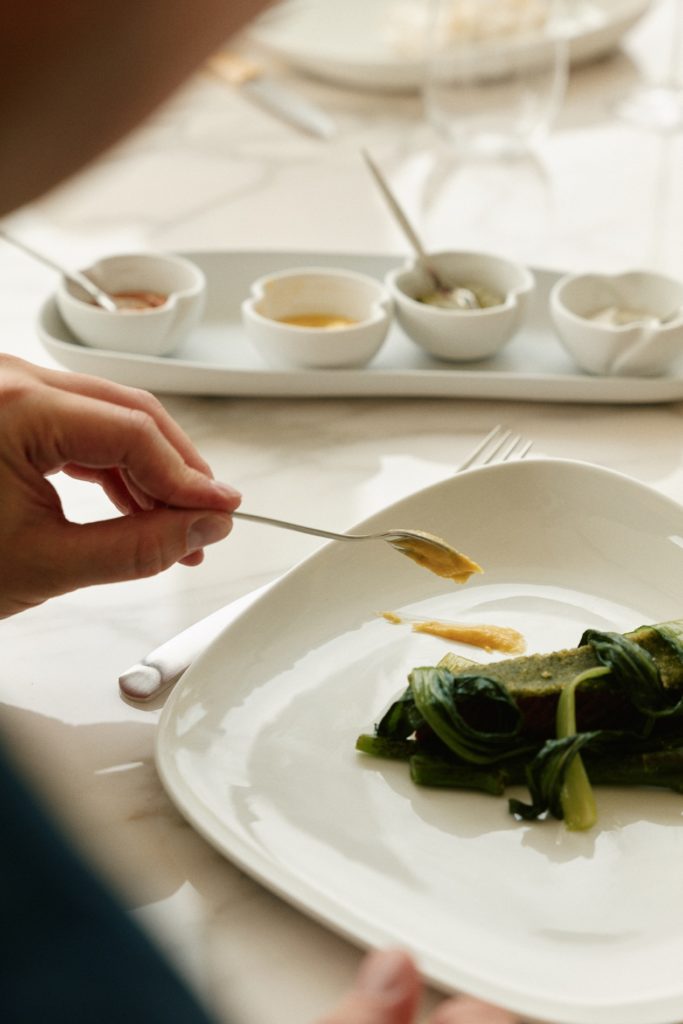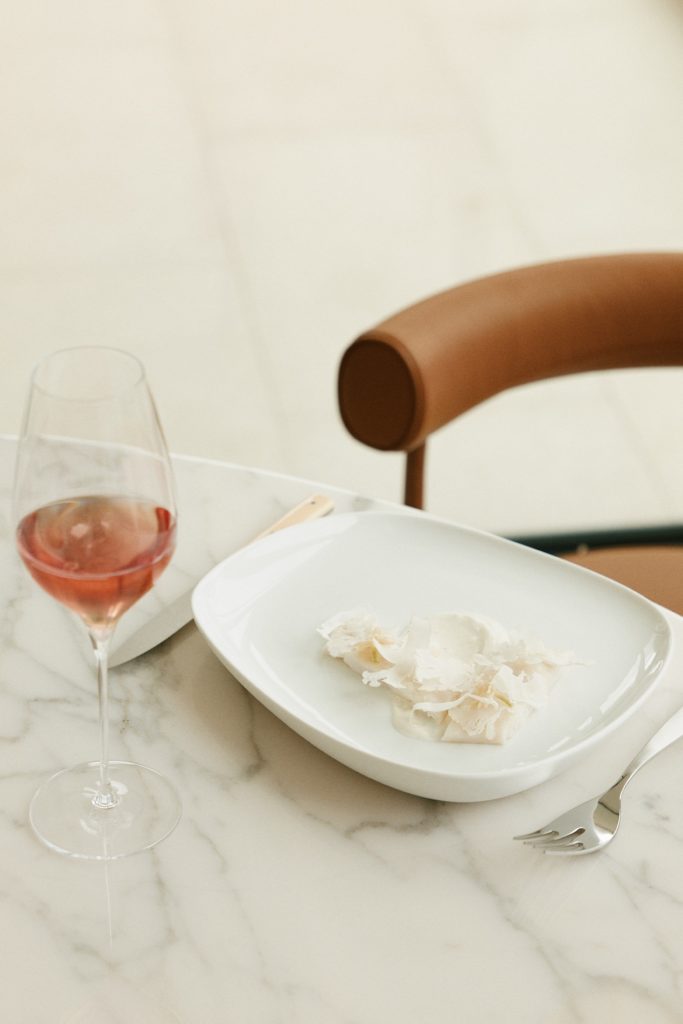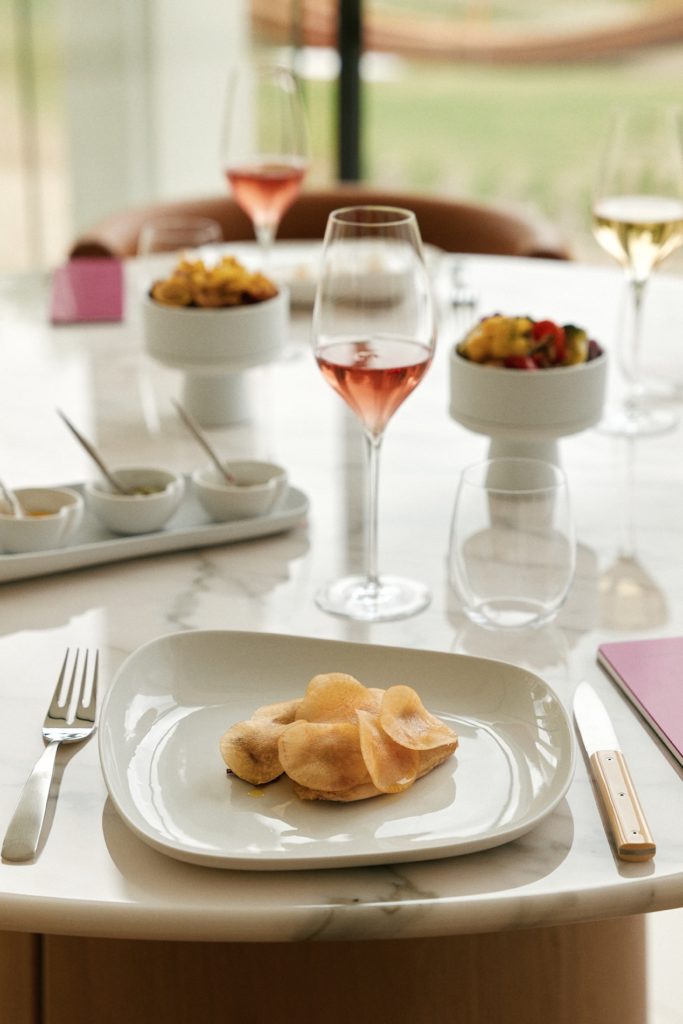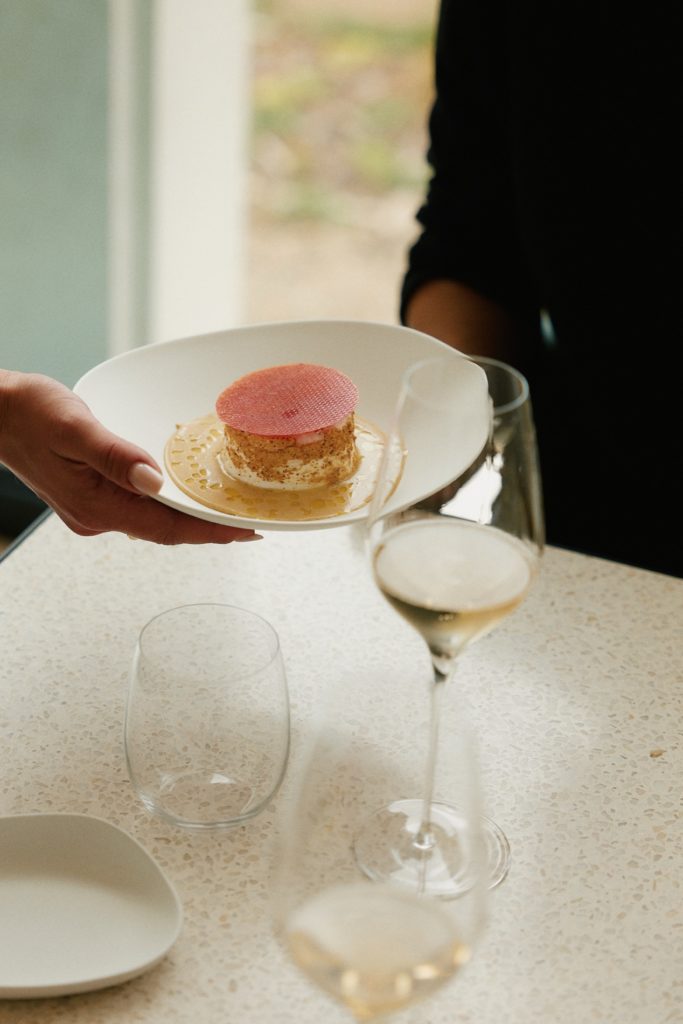In 2020, Charles Coulombeau took home the Taittinger International Culinary Prize*. That was just the start of his journey with the Reims-based Champagne House. More recently, Taittinger called upon this brilliant young two-starred chef to codesign the Polychrome concept, aimed at extending the visitor experience at its historic Saint-Nicaise site in Reims.
Two Michelin stars now grace his name – one at La Maison dans le Parc in Nancy, and the other at the restaurant Yozora in the Metz outpost of the Pompidou Centre. Having spent over half his life in the kitchen, 33-year-old Charles Coulombeau is not the kind of person who rests on his laurels. “I’ve got a hyperactive personality and I also have ADHD, so it [the environment] needs to be busy and bustling.” Despite helming two restaurants, one a brasserie and one a food truck, he still finds time to do consulting work abroad. “I don’t want to spread myself too thin, though. Every project is carefully thought through and has to contribute towards an overall sense of professional harmony.”
The same applies for Polychrome, bringing them the wealth of his experience acquired in the Basque country, the Landes and Burgundy regions of France, as well as Japan and England. Always working in Michelin-starred establishments has instilled in him rigorous standards of excellence – the same excellence that he demonstrated in 2020 when he won the Taittinger International Culinary Prize. “It pushed me to go beyond my limits and was a professional achievement I’m proud of. It reinforced my belief that hard work pays off.” Polychrome has allowed him to continue his success story with Taittinger, a family business built on “values of generosity, sharing and respect – respect for each other, for ourselves, for our products and for our customers – values that I strive to pass on every day.”
What does the combination of champagne and fine dining mean to you?
Champagne is the quintessential party drink. But from a fine dining perspective, you can cook with some champagnes and they can take the place of wine during a meal. As a chef, it’s very interesting to try your hand at pairing drinks with every course on the menu.
How have you found this double bind of using cuvées as a starting point for creating the menu while still playing with colours?
I’ve seen it as a fun challenge. Using champagne as a starting point provides a framework for creation. When you taste a champagne, you identify its aromatic profile. It’s easier than starting from a blank page. In terms of chromatic palettes, we follow the rhythm of the seasons. For example, in April, anything that is green and growing in the same ecosystem will pair very well together. That’s what we’ve tried to reproduce here. Then it was a matter of finding a protein and various ways to achieve this monochrome aesthetic.
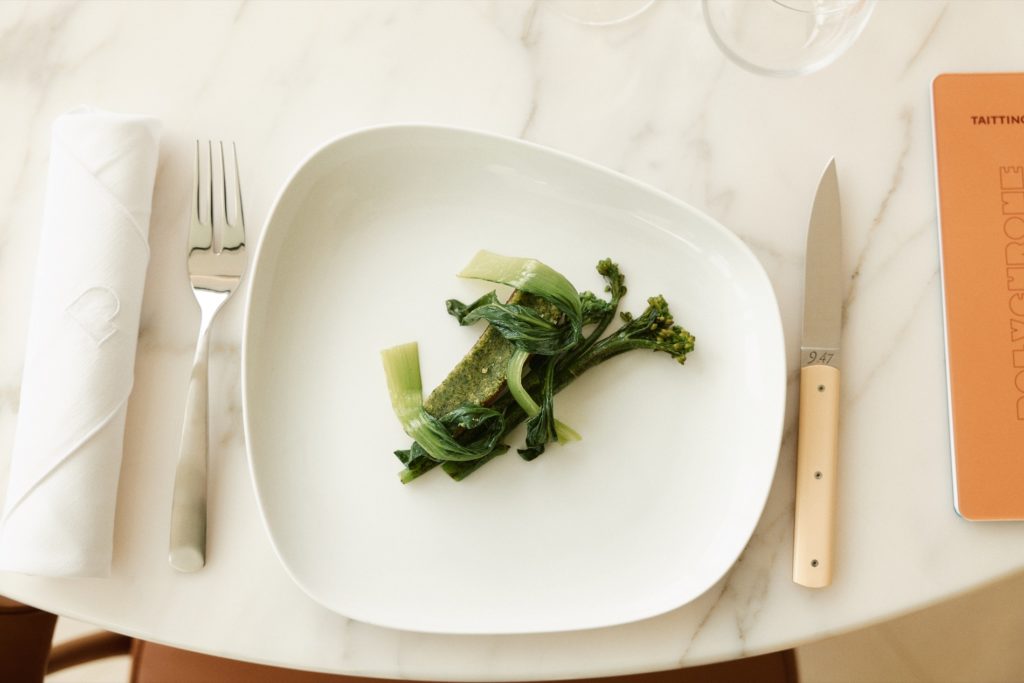
How did your creative process take shape?
I would meet up with Vitalie Taittinger; Audrey Malacain, the head of experience; the sommeliers, and the cellar master, either in Reims or Nancy. Sometimes I would arrive with 30, 40 or 50 sauces or condiments, which we would then frantically taste to find a nice pairing. At first, we tasted too much. We used to bring every possible protein you could imagine, lots of fruit and vegetables, small things that were in my culinary repertoire. Gradually, we narrowed it down, created different combinations and shared our thoughts. We fell in love with some of our creations straight away, like the pistachio sauce that has made its way onto our current menu. Having met up once every quarter for two years, we’ve managed to create a cartography of flavours. By starting with a large rough stone, we’ve ended up with something streamlined and fairly simple.
What do you think of the outcome?
I’m pleased to have been one of the main architects of this project. It’s a unique and playful experiment where people have to create their ‘blend’ with a range of different sauces, as you would if you were making a champagne. It’s fun, uncomplicated and high-quality.
What impression are you hoping to leave customers with?
Let’s imagine that the wine cellar visit is the ‘starter’ and ‘main’, then you come for ‘dessert’ when you sit down to eat at Polychrome. It means that the ‘dessert’ course has to leave a lasting impression, a good memory. If we can do that, then we’ve achieved our goal. It’s what sets the restaurant apart and what we’re trying to hone in on.
How do you feel about this collaboration?
I’ve come away with a valuable new experience, in a new format for me too. I’m in my restaurants every single day. At Polychrome, Maison Taittinger has managed to put together a superb kitchen team, who will be the face of my culinary offering for the coming year. It’s reassuring because I’m lending my name to this project. But I have no concerns whatsoever. Everything is being done properly, with thought.
*Renamed the Prix international ArsNova de la cuisine d’auteur in 2024: https://prixcuisinedauteur.philanthropicarsnova.org/fr
